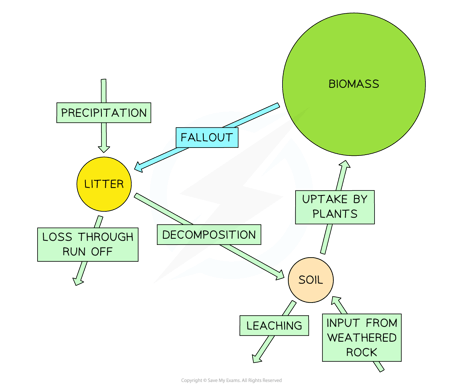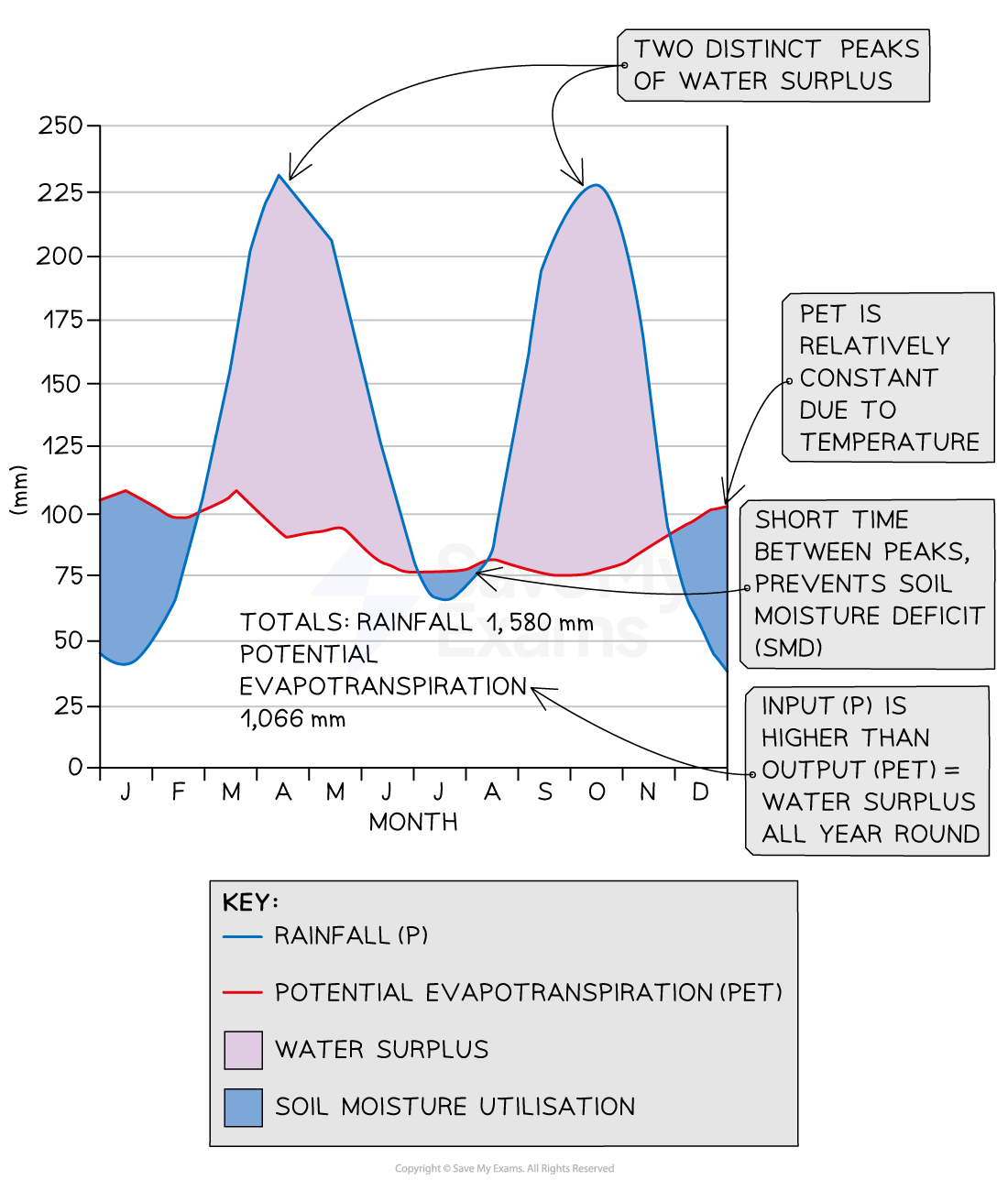Anatomy of a Tropical Rainforest
- The tropical rainforest (TRF) biome is located within the equatorial climate belt, with a mean annual temperature of 27° C
- Between the tropics of Cancer and Capricorn - 23°27' north to 23°27' south of the Equator,
- The TRF now covers less than 5% of the Earth's surface and supports 50% of global biotic organisms
- The main regions of tropical rainforest ecosystem are in the following countries:
- Amazon which is the largest remaining rainforest on Earth usually associated with Brazil but covers parts of seven other countries
- Central America including parts of Belize, Costa Rica, El Salvador, Guatemala, Honduras, Nicaragua, and Panama
- Central Africa including Cameroon, the Central African Republic, the Republic of Congo, the Democratic Republic of Congo (DRC), Equatorial Guinea and Gabon
- Indo-Malaysia, including Malaysia, Indonesia and a number of other countries in South-East Asia

Distribution of the equatorial climate
Tropical rainforest climate characteristics
General Characteristics of Tropical Rainforests
| Characteristics | Equatorial Climate |
| Location |
Low latitudes Within the Tropics 15° north and south of the equator Amazon in South America, New Guinea, South-east Asia, Zaire Basin |
| Annual Precipitation | Convectional rainfall of over 2000mm |
| Temperature Range |
Low range of mean monthly temperatures 26-28°C Constant high temperatures Diurnal range is about 5°C |
| Seasons | No seasons - hot and wet all year round |
| Humidity | High, usually between 77-88% |
| Soils |
Many of the soils in the rainforest are latosols High concentrations of iron and aluminium due to high levels of leaching Nutrient cycling is fast, with nutrients concentrated in the very upper topsoil, and the bulk being stored as biomass. This makes the soil infertile for agriculture |
| Biodiversity |
Tropical rainforests contain the highest biodiversity of plants and animals on Earth Estimates range from over 50% to 80% of the world's plant and animal species One 10km² area can contain up to 1,500 flowering plants, 750 species of trees, 400 species of birds and 150 species of butterflies |

Climate graph for Iquitos, Peru, which shows the typical climate of the tropical rainforest: high annual temperatures and plenty of precipitation
Structure of the tropical rainforest
- The tropical rainforest (TRF) has five distinct layers:
Stratified Layers of a TRF
| Layer | Height (m) | Conditions |
| Emergent | 35-55 |
Maximum sunlight, wind, and rain with lower temperatures at night Trees are enormous and exposed but hardy Straight, branchless trunks that receive the most light |
| Canopy | 20-35 |
Trees compete for light and rain is mostly intercepted Most productive but heavily populated area, as each tree crown has a huge dark, leathery leafed, photosynthetic surface |
| Under canopy/storey | 10-20 |
Hot and humid, with low light levels of 10% Slender, opportunistic trees with thin, smooth bark Climbing creepers such as lianas, form green corridors |
| Shrub | 2-10 |
Just 5% of available light reaches this level which limits growth of vegetation to ferns, woody plants and younger trees Hot and humid throughout this layer, with drip through of precipitation |
| Ground | 0-2 |
Less than 2% of light reaches this layer Temperature change is minimal (1-2°C max) Bacteria and fungi rapidly decompose litter from flora and fauna |

Typical structure of a tropical rainforest






